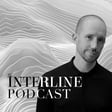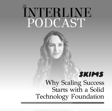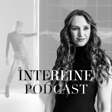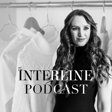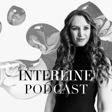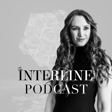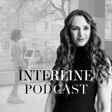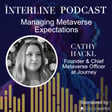Become a Creator today!Start creating today - Share your story with the world!
Start for free
00:00:00
00:00:01

Talking Carbon-Centric Decision Making With Vaayu
Emma sits down with Namrata Sandhu, Co-Founder and CEO of Vaayu to discuss what it was like to build automated software to help the retail ecosystem track and cut environmental impact in real time.
This episode is supported by SOURCING at MAGIC, where The Interline will be returning in August 2024 to host the next series of fashion technology conversations. Find out more at www.sourcingatmagic.com
Transcript
Positive Consumer Reactions to Transparency
00:00:03
Speaker
Consumers are starting to react really positively because they're starting to see a lot of this inexperience and on-site and on-hang tags. So I think from their perspective it's really positive because they're getting a lot more transparency and information on the products that they buy.
Introduction of Interline Podcast and Guest
00:00:18
Speaker
Hello, everybody. Emma here, your host of the Interline podcast. This time on the show, we're talking to Namrata Sandhu, co-founder and CEO of
Vayu's Role in Reducing Environmental Impact
00:00:27
Speaker
Vayu. Vayu is billed as being the world's first automated software, built to help the retail ecosystem track and cut environmental impact in real time. And readers of the Interline might know them as the company that worked with our friends at Lestrange London on the Recount footprint calculator.
00:00:42
Speaker
I really enjoyed talking to Namrata, or NAM as she likes to be called.
Importance of Design Stage in Carbon Reduction
00:00:46
Speaker
We got into why tackling carbon impact needs to be done at the design stage, we talked about their research into climate impact potential of circular business models, and we also discussed how important it is.
00:00:57
Speaker
for companies to make sure the AI models are built using quality and accurate data. I wanted to speak to Nam specifically because of her multifaceted career path and her dedication to putting carbon at the forefront of decision-making and moving the needle when it comes to building a more sustainable future for fashion and beyond.
Vayu's Database and Asian Expansion
00:01:15
Speaker
Under her leadership, Vayu has compiled what it calls the world's largest impact database,
00:01:21
Speaker
a collection of more than 600,000 data points showing the total direct and indirect carbon emissions resulting from the manufacturer, packaging and delivery of all manner of fashion products.
00:01:34
Speaker
Shoppers of second-hand items on websites like Vinted can also use Vayu's data to see how much in carbon emissions they've avoided by buying used instead of new products. In 2023, Vayu broadened its work into Asia, adding the Southeast Asian re-commerce platform Carousel to its partners, and began tracking carbon emissions of companies in retail categories like consumer health, beauty, and electronics.
00:01:59
Speaker
And Vayo has also worked with new fashion partners, including Vasia, New Balance, and Axel Aragato.
Sustainability and Fashion Technology Event Highlights
00:02:06
Speaker
Just before we get into my conversation with Namrata, I want to introduce the sponsor for today's episode, Sourcing at Magic, the milestone fashion event by Magnet Group, formerly in former markets fashion.
00:02:18
Speaker
Their most recent event in Las Vegas drew over a thousand exhibitors from 40 countries, as well as bringing together distinguished business leaders, celebrity guest speakers, and thousands of brands and retailers for three days of community experiences and insightful conversations for the fashion industry. The event featured four critical pillars, entrepreneurship, sustainability, social good with verified sustainable exhibitors, and fashion technology.
00:02:44
Speaker
Sourcing at Magic is proud to be the leading trusted voice and resource to their fashion community, offering a space for important conversations on responsible fashion, sustainability, and community building, offering valuable guidance for fashion professionals across all stages of the business. Don't miss the fusion of fashion and innovation at Sourcing at Magic. Explore with style intertwines with technology, offering a glimpse into the future of sourcing. Over now to my chat with Nam.
Namrata Sandhu's Career Path to Vayu
00:03:15
Speaker
Now it is so wonderful to have you on the Interline podcast today. Um, it is one of my first shows as the host. Um, I've taken over from Ben, as I think, uh, has been explained to you. Ben was our host. He's our editor in chief, and now I'm running this new show and I'm truly so excited to have you here. So could you please begin by introducing yourself, talking a bit about your career path and your journey to founding or co-founding value?
00:03:43
Speaker
Thanks so much for having me, Amman. It's a pleasure to be here. As you said, I'm Nam. I'm one of the founders of Vayu and previously in another lifetime worked as, started as a sustainability consultant a long time ago, working with kind of larger businesses that were thinking about impact
00:04:01
Speaker
sustainability within supply chains and did that for quite a few years and then moved to London to study at UCL and I did my master's in environment specifically looking at climate science did my dissertation on offsetting and then continued for a little bit longer as a consultant and then realized I was
00:04:19
Speaker
dipping in and out of a lot of different things, but not really implementing a lot of the work that I was suggesting. So kind of decided to go in-house and had worked across kind of retail, lots of different industries and realized that there was a lot of issues within the retail space to solve and a lot of things within supply chains. So kind of decided to focus in on retail really specifically and started to work at the Arcadia Group, which at the time owned Top Shop, Top Man and a lot of the UK high street brands and was,
00:04:49
Speaker
kind of working on sustainability there, did that for close to four years and then moved to Berlin to work at Zalando. Digital was the future at the time it was 2016, so really moved to kind of understand how e-com digital works and got the opportunity to do lots of really interesting things on site in experience from a sustainability perspective and did that again for close to four years and then
00:05:12
Speaker
quit. And then it was the pandemic. And so didn't take the large career break that I thought I was going to take. And then at Solando had seen a lot around the kind of and previously as a consultant as well, the infrastructure it takes to calculate carbon, the amount of people that have to get involved in a big business, the amount of data transformation you need to do. And then you get this kind of static output that's a carbon footprint for 12 months going back. And
00:05:40
Speaker
In retail and brand especially, there's the carbon footprint changes all of the time. The business adds new verticals, there's new products added in. Sometimes when you go back and you look at this 12-month picture, there's very little you can do from a decarbonization or reduction perspective because the business has changed so much since you started to do the footprint.
00:06:02
Speaker
So with that in mind and thinking about reductions really specifically, we started the company to kind of help brands and retailers to understand reduction optimization opportunities within that business.
Empowering Choices with Data
00:06:14
Speaker
And then brand and retail is a big opportunity to talk to customers, to empower choices, to give them data, to understand
00:06:21
Speaker
the impact of the decisions that they make. So very much thinking about the whole life cycle from what the retailer, what products they produce, how they package them, the logistics to them, the choices the customer has on how they pick up the product, how they use the product, how they dispose of the product and thinking about that whole kind of journey and how to use data to empower those choices. That's really interesting. And I think your career, how you've sort of moved around, you're in
00:06:48
Speaker
perfect position to do exactly what you do at Vayu because you know it's a fashion business but there's so much more to it than that right you work for retailers and brands but there's so much depth behind what you do and I think you've really got that down from your experience working you know in
00:07:07
Speaker
various different segments and having the experiences that you did. Zooming in a bit onto Vayu, how did you start and have you seen the change? Now you have a hundred brand partners across three continents. What was it like to build the business? And yeah, from beginning back then to now, how has it been? And what have been some of the core, I don't know, milestones to where you are now?
00:07:37
Speaker
Yeah, so it's been an intense journey, let's say. And I think for us, one of the kind of biggest pieces that we were trying to solve or trying to help businesses to do is exactly, as I mentioned, kind of around how do you automate the data in absence of good quality data? How do you help brands still make decisions and still help them understand ways that they can decarbonize? So for us, with over 100 brand partners using the platform and being able to see
00:08:04
Speaker
ways that they can lower their impact is hugely fulfilling. However, there's a lot from a platform and a tooling perspective we can build in terms of what decisions because there's so many micro decisions that businesses are making every day and how we can empower them to understand the impact of all of those. So while we've come a long way, I think there's a lot of work still to be done. And I think one of the things that
00:08:27
Speaker
When we started actually that the brands kind of drove from a tooling and a platform perspective is we came in with the kind of vision to start with calculation and then tracking reductions and kind of science based targets and net zero targets. And one of the things we heard a lot from businesses was we don't want to go back in time and change the decisions that we make. We can't do that. We want tooling and capability that helps us to decide before we make those decisions.
00:08:53
Speaker
What is the impact of those decisions? So really driven by the brands, a lot of the platform that we built in hearing the feedback has, we have iterated and changed a lot of what we plan to do or where we started and kind of developed the platform very much based on the feedback we got from a lot of the brand partners. Right. And just speaking of those partners, what were some of the biggest challenges facing them when they came to you? Where do you see demand and what are some of your current focuses for your partners?
00:09:23
Speaker
Yeah, so at the start, and it's changed maybe just to say overtime quite a bit, so it started a lot around the teams were spending a lot of time on calculation, they were spending a lot of time on finding this data, and they weren't spending as much time as they would like on reductions and optimization, which is
00:09:39
Speaker
to be honest, why sustainability teams come into the job is really to be able to drive the business to make change. And they want being able to do that. So that's one of kind of the starting point. That's one of the reasons we started working with a lot of brand partners to kind of automate that process. As we automated that process, we kind of iterated and saw brand partners really want to be able to make decisions to use scenario modeling to
00:10:02
Speaker
to reduce impact to kind of use much more of the capability. And we saw that kind of evolve. And also when we start working with the brand, sometimes the kind of starting point is the automation, but then it kind of evolves into
00:10:14
Speaker
Okay, what can we do with this data? Now we've automated the process. How does the data become more useful? So it also changes over time as we work with them.
Impact of Recent Regulations on Brands
00:10:22
Speaker
And then maybe just say that was the starting point, but recently regulation has come through fast and furious. So we hear a lot of brands wanting to understand how to navigate the regulation, how to make sure their reporting is robust, how the quality of their reporting is good, what they should be reporting. So we've seen regulation as a massive driver maybe
00:10:43
Speaker
much more recently in the last three to six months. Yeah, that makes a lot of sense. And just speaking of regulation and also, well, hand in hand with data, there's a lot of evidence that tackling carbon impact needs to be done very early. So the decisions made during the initial design are critical because they can be up to 80 percent of a product's environmental impact that's determined in that phase, according to the sustainable production and consumption.
00:11:14
Speaker
So how important do you think it is to bring data into design to consider impact from the outset? It does value support this.
00:11:23
Speaker
Yeah, absolutely. And I think it's critical and I think brands agree that it's very much what they need to focus on. So we, as I said, we started with kind of the calculation platform and then kind of started to add this scenario modeling or this design aspect. So we call it the product design studio, and it's very much focused on how can you understand the impact of the products before you design them, or if you have a bestseller and you're looking to
00:11:48
Speaker
change certain elements or change zips or trims or buttons or main materials or laces on shoes or any kind of range of things that you can do. We very much help brands to then understand what's the impact if you change those parts of the design of the product. We also do this a lot on packaging and logistics. So I think there's a lot of emissions that sit in packaging and logistics, packaging both primary and secondary. So also if you changed your packaging, if you change the material, if you change the
00:12:18
Speaker
your medium box you produced it by five percent kind of understanding what the impact of all of these decisions are based on your volume and your business because of course everyone has different volume everyone has a different split and a share so it's super critical that you think about that based on the entire footprint of your business and similarly logistics for example we have a lot of european brands
00:12:40
Speaker
that are shipping into the US and thinking about setting up a 3PL system. How much carbon do you save by doing that? Where should you be setting that up? So getting into kind of really specific detailing on how you design products, how you package them, and how you move them around to be able to make those decisions before and then actually impact them positively. Yeah, it makes a lot of sense to start early because then it sets a tone for down the supply chain as well.
00:13:09
Speaker
That's fantastic that you support that in such a big way. We speak to a lot of brands and retailers because the Interline is a B2B technology publication for fashion professionals. So we speak to them and we find that they still have some difficulty gaining the understanding around carbon emissions and what it means to actually make meaningful reductions. So those who are seeking to reduce their carbon footprint face a lot of pain points due to the cost, complexity, and also
00:13:39
Speaker
due to lack of data in manually compiling the accurate data, if that makes sense. So when it comes to transparency and tracking, as well as the availability of data, there's also a component where quality and accuracy are really important. Have you experienced any challenges
Addressing Data Quality in Emission Reports
00:14:00
Speaker
in this availability of data with high quality and accuracy?
00:14:04
Speaker
Has this affected your AI models at all where there is a lack of carbon emissions and impact data? Yeah, absolutely. One of the biggest pieces of what we've been trying to solve is this data problem, both from the perspective of what is the data that the retailer or the brand has and what is the data on the emission or conversion factors that is available and what is the research that has been done from a emission factor perspective. They are both problems that need to be solved and are quite complex.
00:14:31
Speaker
So from a kind of business data perspective, what we try to do when we solve for this is essentially we built a database that's machine readable that uses AI, so that no matter what the data input, we're still able to derive an output that has a way for the brand to be able to think about.
00:14:48
Speaker
reductions. So for us, one of the things you're trying to solve with data accuracy is very much how do you get the business to understand reductions, optimization, hotspots, where should you really focus? So even in the absence of good quality data within a business, we want them to be able to say, okay, these are the places I need to focus, this is what I need to do to kind of lower my impact.
00:15:09
Speaker
So for us, that's a really important problem to solve and one that we have probably spent the most time on. So the database really learns estimates, gets smarter, and is always able to derive the overall emissions with the hotspots, no matter what the data input. And what we also do is we derive an accuracy score.
00:15:28
Speaker
at the product level, so you can understand overall how good was the accuracy of the footprint done, but also at the supply chain stage level. So you know that you have kind of within the raw material stage, for example, you don't have enough good quality data, but at the manufacturing stage you do. So accuracy, not just at a product level, but within every stage of the supply chain. And then to your point around kind of the data and the emission and the conversion factors, that's a piece that
00:15:55
Speaker
I think generally the industry is trying to solve. So we work a lot with universities to kind of see, to kind of specifically say where we find data gaps, where research would be helpful. And we also work a lot on kind of pulling in the most scientific peer reviewed literature as it becomes available and input it into the database to try to make sure the bank of emission factors we work with is as large as possible. So you can get as accurate as possible with the matching of the data point to the emission factor.
00:16:25
Speaker
Yeah, absolutely. And that's so powerful. It sounds like you really do your research and are working towards that kind of gold standard of accuracy and quality, which is really what's needed. You probably understand a bit more than I do when it comes to these kinds of things. But yeah, it's so important to build an accurate
00:16:44
Speaker
Well, build a model with accurate data. So that's really good to hear. We've touched on it slightly. It's around regulations. So we know, as you mentioned, that the regulations that are coming up in, or actually some of them are already in place in the EU and the UK and the US.
00:17:04
Speaker
there really have been a driver for many in the fashion industry to change their ways or at least start thinking about changing their ways. What's been the reaction from people you work with or just what you've seen in the fashion industry towards these new standards that are imminent? Yeah, and that's a really interesting question because I think on one hand,
00:17:30
Speaker
The kind of sustainability professionals we talk to are super happy that all of this regulation is coming in. It means that the businesses have to report, that they have to do more than they've ever done before. So from that perspective, I think there's a lot of positivity around the fact that governments are regulating what you need to do from a carbon and a reporting perspective.
00:17:49
Speaker
But kind of on the other hand, a lot of it has come in really, really fast. And I think businesses are struggling to navigate what they need to do, which supersedes the other, which laws do they have to report, or which regulations do they need to report again. So I think there's a lot of confusion around what businesses and brands need to do as well. So one of the big pieces of work that we've done in the last three to six months is kind of build a tooling and capability around kind of which regulations are relevant for you,
00:18:19
Speaker
what do you need to report against as a brand based on the jurisdiction, based on which part of the world you're selling in, because it's starting to get very, very complicated and difficult. And because it's also new, there isn't really an infrastructure around it from kind of a law firm perspective or everyone's trying to upscale quite quickly. So I think there is a lot of confusion as well. And then kind of a third big piece is around greenwashing.
00:18:43
Speaker
and the hesitation with all the kind of authorities getting involved in what you say what claims you make and then brands being quite hesitant to then be able to make those claims as well so i think it's been really good and really positive but i think there's a lot of work to be done to kind of understand what you need to do as a fashion brand and then to your question on consumers i think
00:19:05
Speaker
Consumers are starting to react really positively because they're starting to see a lot of this inexperience and on-site and on hang tags. So I think from their perspective, it's really positive because they're getting a lot more transparency and information on the products that they buy. Right. Yeah. And I think you've really hit the nail on the head.
00:19:25
Speaker
talking about just the confusion and the scope of the regulations, because I do think a lot of professionals and also consumers, you know, there is this new focus on sustainability and I think people are interested in really investing, but there's just so much information out there. And I will say that Vayu has done so well in terms of making things simple. On your website you have
00:19:51
Speaker
you'll tell me exactly what it is, but there's a lot of great information there that's easily accessible and easily readable and digestible. I've used it myself when I write my news on a Friday when it comes to sustainability topics. So I think you're really playing your part in helping people, professionals and consumers to understand a little bit more about all of the complexities in terms of regulations that are happening right now.
00:20:20
Speaker
That's really nice to hear Emma and also we call it the legislation tracker and actually one of the things that's it. We initially had it as a free tool for our brands that we work with in platform. And then we realized that actually everyone's super confused and we'll make it free and we'll give access to everyone to be able to navigate because we want businesses to be able to understand the regulation better, to be able to report against it. And felt that wasn't something we wanted to gate keep. And definitely that's why it made it free.
00:20:49
Speaker
available to everyone? No, it's fantastic because I think it's something that is very daunting.
00:20:56
Speaker
Many people don't have that. Well, the thing is it's not so scary, you know, when you read a regulation, but how it's presented maybe on the EU website is very, very, there's a lot of jargon. So I appreciate your tracker very much. I want you to maybe tell us a little bit about your work with Lestrange. They're friends of us here at the Interline.
00:21:23
Speaker
They recently wrote about their sustainability in our 2023 sustainability report. Yeah, can you just tell us a little bit about how you work with them?
00:21:34
Speaker
Yeah, so Lestrange is super interesting because one of the things, so they think about sustainability quite a bit in the way that they design products in kind of the take back program that they have. And what was really interesting is they wanted to find a way to engage the consumer a bit more and give them the tools to be able to understand the impact of their choices. So I think this is a little bit the Holy Grail is kind of how do you engage consumers and give them the tooling to be able to understand
00:22:00
Speaker
some of this data that's super complex and difficult and hard to quantify and it becomes quite technical quickly. So how do you simplify all of that into ways that they can understand? So we built the recount calculator with them, which is very much around which products do you select? What do you do when it comes to aftercare of those products? How much do you wash them? How do you dispose of them? Do you then resell them?
00:22:23
Speaker
What is the impact of all of those decisions that you make as a consumer? And how do you quantify that in a way that you can understand against your entire lifestyle? So we kind of added in this carbon budget. So we looked at the UK data of what should be the carbon budget per person, and kind of quantified all of that in light of a carbon budget. And we wanted to show a toggle optionality. So as you make all of those decisions, you don't just make one and then stop. So if you washed it less, if you
00:22:51
Speaker
bought something secondhand, if you bought a different product, how do you play with all of those options and then overall understand what is the total impact of those choices that you made and then what does that mean in the totality of your carbon budget and how much of it are you using when you do, when you shop with Lestrange and then you change kind of some of this behavior.
Consumer Awareness Through Lestrange's Calculator
00:23:10
Speaker
So for us, it was very much around empowering the consumer to understand their choices, using equivalence and easier ways to understand some of this data.
00:23:20
Speaker
Absolutely. And that's so important. I think as we've said, it's not that people don't want to buy in and really focus on sustainability. It's just sometimes they just can't quantify it. And I think that's what that tool really does. Um, and then they can get thinking and, and hopefully transfer that over to some of the other brands they shop with, or you can just be like me and never buy anything for yourself ever again. Um, I find it very difficult to shop now since
00:23:50
Speaker
I'm working with Interline for two years now, but that's not necessarily the way to go. It's just about having knowledge. Knowledge is power. So that's great to hear. And speaking a little bit more about resale and touching on circularity, Vayu really has pioneered research into the climate impact potential of circular business models, delivering the largest ever primary dataset on the climate impact of shopping secondhand fashion online.
00:24:20
Speaker
What were some of the key findings of that research and can you quantify the extent of the reduced impact between secondhand goods and new products? Yeah, so when we started the business, one of the big questions that came up was circularity and kind of how do businesses quantify impact when, because
00:24:40
Speaker
I mean, circularity when you think about growth is one of the avenues to kind of reduce impact while still growing the business. So whether it comes to repair, rental, off-price, re-commerce, all of these business models have come up as ways to reduce impact. So one of the big areas that we wanted to focus on is how do we understand whether this impact is positive and what are the levers to understand
00:25:03
Speaker
circularity impact, essentially. So we did a large piece of work with Vinted on re-commerce. We surveyed 350,000 users. We looked at over half a billion transactions to try and understand is re-commerce on Vinted overall positive or negative. And we found that you do avoid emissions by selling on Vinted. And one of the biggest areas to focus on is very much the replacement or displacement rate, which is
00:25:29
Speaker
how much of what you're buying on these re-commerce platforms displaces a new and this percentage varies by platform and users it's not fixed at all so in the case of winter it was 39% displaces shopping new we worked with carousel in asia for them the displacement rate was 56% of what you buy on carousel displaces something new
00:25:50
Speaker
In the case of Autrium, which is an off-price marketplace, the model is a little bit different because it's about selling last season's stock, and there there was a displacement rate of 82%. So it varies very much by business, by how the customer thinks about shopping, how they think about re-commerce, how they think about off-price. So there's a big customer part within this. And then the second really, really big and most important part is the delivery footprint. So the packaging and the deliveries are making up
00:26:17
Speaker
the major share of the impact of any circular re-commerce repair rental type business, and essentially trying to optimize and make sure that those deliveries are as low as possible is super important. And most re-commerce marketplaces like Vinted use pickup and delivery options as well. So there we kind of tried to understand and quantify the impact of pickup and delivery as well. So if you don't get something at home, but you'd rather go to a pickup point, how much better is that? And that also varies
00:26:44
Speaker
by location, by country, same as the displacement rate varies by product category. So this is the average across all categories, but for some categories it's much higher, for some it's much lower. So getting into the real granularity of trying to understand what does the behavior mean across all of these categories and how can you really quantify that? Yeah, it's no easy feat. It really, really is not.
00:27:11
Speaker
It's a whole world of complexity. I'll just say that speaking to you and looking into the work Vayu does, there's so much that we have to
00:27:21
Speaker
get into the granular detail
Collaborations for Next-gen Sustainability
00:27:23
Speaker
of. So yeah, just I hope that Bayou continues to do what it does and just keep unturning the stones to make a difference for businesses and consumers. And speaking of fashion businesses, you have worked with some of the biggest names in fashion. You've mentioned Vinted and Veja is another one, New Balance, Ask It.
00:27:47
Speaker
Ascent Tate, Wonderman Thompson Commerce, a lot. Is there anyone else that you'd like to work with where you think you could have a significant impact? Yeah, so one of the places we've started doing more work on is working with kind of material
00:28:04
Speaker
People that develop next-gen materials because we think there's a huge amount of movement towards next-gen materials and understanding their impact. So we started to work with some providers there. And the other piece that we started working with is also manufacturers. The large manufacturers play a big role in the impact, in the choices that they make in terms of the factories that they use.
00:28:23
Speaker
the energy that the factories use, which raw materials they bring in. So we've also started to work with manufacturers and material providers to kind of really close the loop on, we work with the brands and businesses, but how can we get one better quality data and how can businesses understand the impacts from a manufacturer and a material provider level as well? Right. That's really exciting. Well, I hope that happens in the near future. Next-gen materials are an area that I think is
00:28:53
Speaker
really important. I'm sure you know a little bit about Renew Cell and what went down there. So I would hope that in the future we're going to see some more of that and it would be awesome to see Vayu supporting that. So on that note, it's just been such a pleasure speaking to you now. You really are such a bright mind in the industry and
00:29:16
Speaker
the industry is lucky to have you. And what would you say is the long-term vision for Vayu and even for yourself?
Vision for Environmental Data in Business Decisions
00:29:24
Speaker
Where do you see yourself going in the next few years? You've had such a long and interesting career already, many different hats. Yeah, what's next for you and what's next for Vayu?
00:29:36
Speaker
Yes, so I think we talked a lot about the scenario modeling capability at Vayu and helping businesses understand impact. So I think for us, the real kind of focus and long term vision is how do we get the data in the hands of people across the business that are making every micro decision to basically understand
00:29:54
Speaker
the impact of those decisions that they make. How do we get them to know if I do this, this will be the impact. This is how I can reduce my impact. This is what it means to do, I don't know, pick this cotton when I'm designing a product versus pick this packaging material or when I look at the size of my packaging. So kind of how do we get that as status quo and something that businesses do every day. So for us from a long-term vision perspective, we want the data to be used in the same way you use
00:30:21
Speaker
accounting data or financial data or just thinking about carbon and general impact widely, not just carbon, but also water waste, all of the other kind of categories of impact in the same way you think about financials.
00:30:33
Speaker
For us from a long-term vision perspective, it's very much how do we get this to be business as usual, exactly like financials. And for me personally, it's to continue to build and grow the team. I think we have an amazing team and we've been super lucky with that. So kind of developing that, developing the tooling that we build and kind of continuing on this journey that I've been on for a long time and seeing how we can really move the needle when it comes to helping businesses to be able to
00:31:01
Speaker
embed sustainability a lot more within everything that they do. Sounds fantastic and we will be watching your star rise. So thanks so much for being here today Nam and we'll see you next time. Thank you so much Emma, it's been a pleasure.
00:31:20
Speaker
Thanks again to today's sponsor, our friends at Sourcing at Magic for supporting this episode of the show. With a forward-thinking approach and commitment to the evolution of the global apparel supply chain, Sourcing at Magic consistently provides access to emerging fashion technology, solutions, sustainable resources,
00:31:38
Speaker
educational content, networking, and extended visibility into the industry's most important critical global issues. More than just events, Magnet and Sourcing at Magic within the group is a deeply rooted community who are working towards fulfilling the vision of a more connected collaborative fashion industry. You can find out more year round by visiting www.sourcingatmagic.com and look out for more collaborations between the Interline and the team at Sourcing at Magic soon. I hope you enjoyed my conversation with Namrata.
00:32:07
Speaker
Be sure to give Vayu a follow on their social media platforms. And if you're looking for some clarity on the latest fashion and textile regulations, take a look at this super helpful and easy to use legislation tracker. There are many more exciting guests in our podcast pipeline. So to make sure you don't miss an episode, subscribe to the Interline podcast, wherever you listen to podcasts.
00:32:26
Speaker
and give us a follow on LinkedIn and Instagram. And a final reminder from me, please subscribe to our newsletter, where we give you a weekly insight into the biggest stories of the week in the world of fashion technology. I work on those weekly breakdowns with the rest of the team here, and we put a lot of thought each week into not just capturing the top headlines, but really analyzing them. You can access that newsletter on our website by clicking the newsletter icon in the top right corner of the screen, and it will be delivered straight to your inbox every Friday.
00:32:56
Speaker
Thanks for listening. Bye for now.

